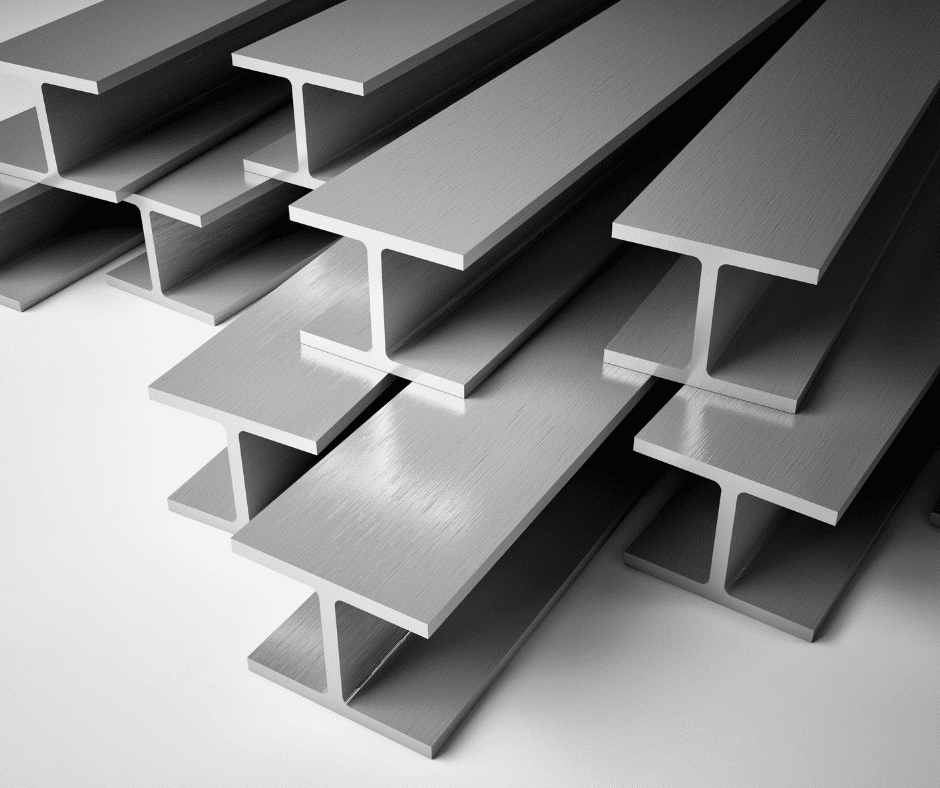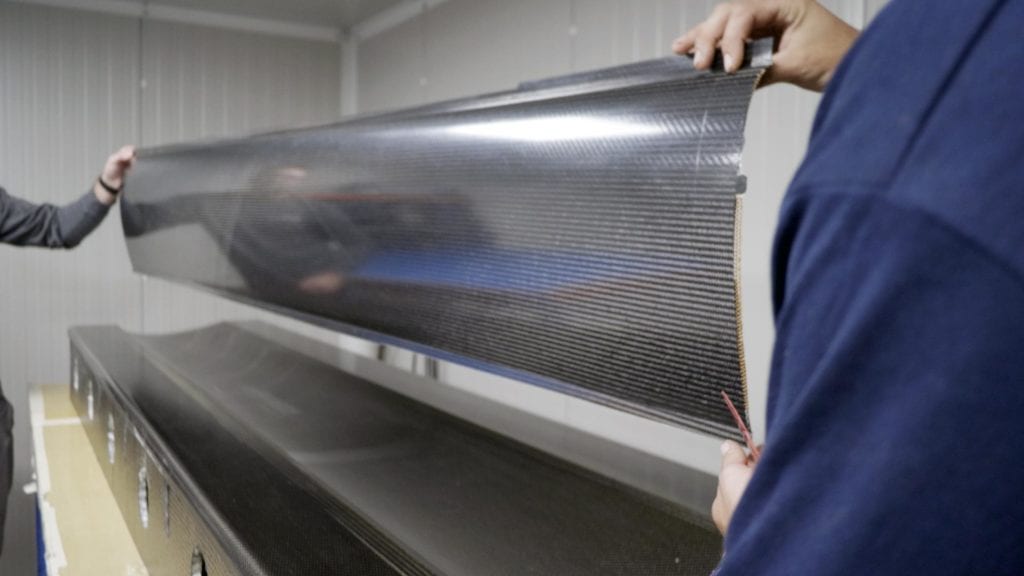Do you want to know if carbon fibre is stronger than steel? Read on to find out which material is stronger and discover the key differences using our easy comparison chart.
Here at Piran Composites, we use carbon fibre to manufacture exceptional high-performance products for a range of industries all over the world.
So, let’s find out – is carbon fibre stronger than steel?
Table of Contents
Is Carbon Fibre Stronger Than Steel?
Carbon fibre is stronger per unit weight than steel. In strength-to-weight ratio, it is five times lighter and hence five times stronger than steel. Its high tensile strength and stiffness, plus its corrosion resistance and ability to withstand excessive heat, make it the preferred choice over steel when manufacturing lightweight, high-performance parts.
What is Carbon Fibre?
Carbon fibre is a polymer made of thin strands of carbon atoms bonded together in a specific pattern. These carbon strands are extremely strong and rigid which gives carbon fibre its impressive mechanical properties. The manufacturing process involves weaving these strands into a fabric. When this fabric is combined with a resin, it forms a composite with high levels of tensile strength, stiffness, and durability.

A Brief History of Carbon Fibre
Carbon fibre was first invented in 1876 when Thomas Edison used carbon filaments for his early light bulb designs. However, the material as we know it today began its development in the 1950s and 1960s, with significant advancements in the process of creating strong, stiff fibres from a polymer base. By the 1970s, carbon fibre had emerged as a revolutionary material, offering an exceptional strength-to-weight ratio that appealed to aerospace, military, and motorsport industries.
What is Steel?
Steel is a widely used alloy composed primarily of iron and carbon, with a carbon content of up to 2%. It also contains small amounts of manganese, silicon, phosphorus, sulphur and oxygen. Steel can be easily shaped and formed into different structures and is a staple material in construction, infrastructure, and manufacturing. It is produced through two methods: in a blast furnace-basic oxygen furnace (BF-BOF) or an electric arc furnace (EAF).

A Brief History of Steel
Steel was first produced over 4000 years ago through a process called smelting, where iron ore was heated with charcoal to remove impurities and create a stronger material. In the 17th century, the development of the blast furnace made it possible to produce cast iron in larger quantities, paving the way for the industrial use of steel.
In the 1850s, The Bessemer Process was introduced, allowing for the mass production of steel. This dramatically reduced its cost and made it more accessible for construction, railways, and later automobiles and appliances.
The 20th century introduced further advancements in steelmaking technologies, such as electric arc furnaces and basic oxygen steelmaking, which improved efficiency and environmental impact. Its widespread availability and relatively low cost make it a staple material in construction, infrastructure, and manufacturing.
Key Differences Between Carbon Fibre and Steel
Now that you understand each material, let’s compare their different properties, explore each of their advantages, and find out why carbon fibre is stronger than steel when used in high-performance parts.
| Properties | Carbon Fibre | Steel |
| Best Tensile Strength | ✓ | |
| Best Compressive Strength | ✓ | |
| Best Flexural Strength | ✓ | |
| Lowest Weight & Density | ✓ | |
| Highest Temperature Resistance | *carbon fibre can also have high-temperature resistance when coated | ✓ |
| Least Thermal Expansion | ✓ | |
| Best for Tailored Thermal Conductivity | ✓ | |
| Lowest Cost | ✓ | |
| Easiest to Recycle | ✓ |
Strength (Tensile, Compressive, and Flexural)
Carbon fibre outperforms steel in terms of tensile strength, offering superior strength at a fraction of the weight. Tensile strength is a material’s ability to withstand loads that attempt to stretch it. This makes carbon fibre ideal for applications where lightweight materials are at the forefront of the design.
Steel, on the other hand, tends to have higher compressive strength and flexural rigidity. Compressive strength refers to a material’s maximum compressive stress, and flexural strength is a material’s ability to bend without deforming. This makes steel preferable in constructions and applications where heavy loads need support.
Weight and Density
Carbon fibre is significantly lighter and denser than steel. It is five times lighter, and its density ranges from 1500-2000kg/m³. This is beneficial in the aerospace, automotive, and renewable energy industries, where reducing weight can lead to improved performance and efficiency. Steel is heavier, and typically, its density is around 7,850 kg/m³, depending on the alloy composition. It provides structural integrity and is often used in infrastructure and construction for its load-bearing capabilities.

Durability and Resistance
Steel is inherently more durable in harsh conditions and is more resistant to high temperatures and corrosion, especially when treated or alloyed with other metals. Carbon fibre, while also durable, requires protective coatings to maintain its integrity in similar environments and is more susceptible to damage from sharp impacts. However, carbon fibre is highly resistant to chemical exposure.
Thermal Expansion and Conductivity
Carbon fibre has minimal thermal expansion, making it an excellent choice for applications requiring dimensional stability across a range of temperatures. Its thermal conductivity can be tailored through the orientation of the fibres, offering both insulative and conductive properties. Steel, however, has higher thermal conductivity and expands more under heat, which must be accounted for in designs and structures.
Cost Factors
Carbon fibre is more costly to produce than steel, which is reflected in the price of carbon fibre products. While the cost of carbon fibre has decreased over time due to technological advancements, it remains more expensive than steel, making it less accessible for certain applications.

Environmental Impact
Steel is highly recyclable, with a significant portion of new steel being produced from recycled material, reducing its environmental footprint. Carbon fibre offers energy efficiency benefits due to its lightweight nature but is more challenging to recycle.
Final Thoughts: Carbon Fibre Vs. Steel
Carbon fibre is stronger than steel in terms of strength-to-weight ratio; it continues to push the boundaries of design and performs exceptionally in high-performance parts in the aerospace, automotive and renewable energy industries. Steel, on the other hand, is celebrated for its durability, temperature resistance, and compressive/flexural strength and remains a cornerstone in construction and manufacturing. Therefore, the choice between carbon fibre and steel depends on the specific requirements of the application and factors such as weight, strength, environmental conditions, and cost.
Here at Piran Composites, we manufacture high-performance carbon fibre composite parts every single day using the latest technology and large-axis CNC machining. Want to learn more about our composite capabilities for your business needs? Contact our expert team.
FAQs
Is there a material stronger than carbon fibre?
Yes, graphene is considered the strongest material ever tested. However, there are still currently practical challenges in producing and manipulating graphene at a large scale.
Does carbon fibre break easily?
Carbon fibre is not ‘easily’ broken under normal conditions and when used within its designed parameters. It performs exceptionally well when forces are applied in the direction of the fibres. However, it is brittle compared to steel, and when subjected to sharp, sudden impacts or stresses from certain directions, it can crack or shatter.
Is carbon fibre stronger than titanium?
Titanium has a higher compressive strength and is more durable than carbon fibre. However, carbon fibre has a higher strength-to-weight ratio which makes it a preferred choice in applications where weight reduction is essential.

